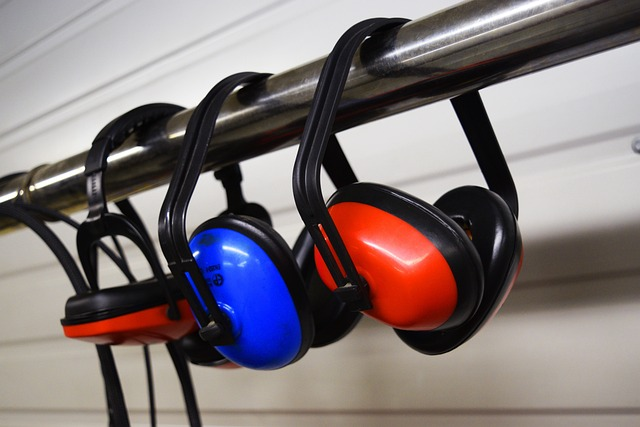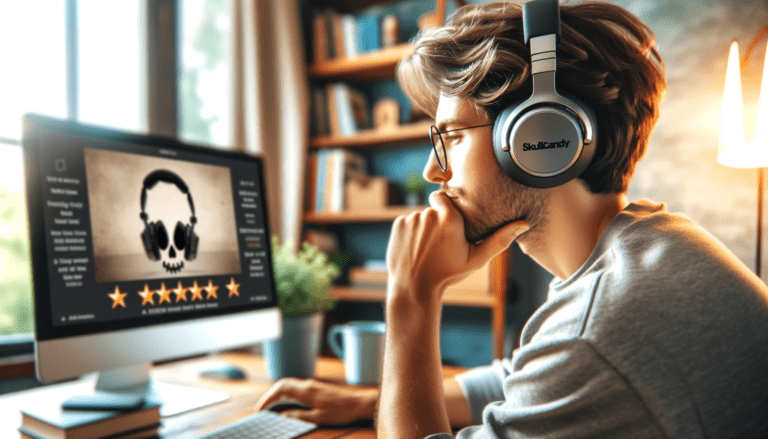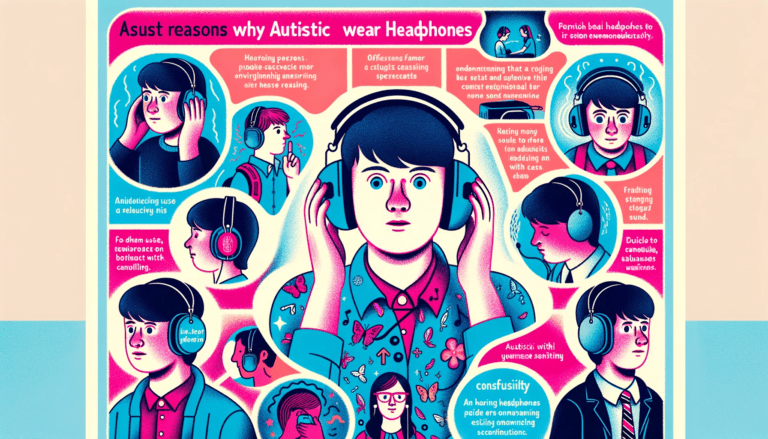Bose Noise Cancelling Headphones, like other ANC (Active Noise Cancelling) headphones, are primarily designed to provide a better listening experience by reducing unwanted external sounds.
They utilize advanced technology to produce opposing frequencies that cancel out ambient noise, allowing users to listen to audio content without the need to increase the volume to potentially harmful levels.
This technology was originally developed for hearing protection in noisy environments like airplane cockpits, suggesting that noise-canceling headphones can indeed be beneficial in preventing hearing loss and alleviating noise-related stress.
This article explore the heart of this issue, examining the effectiveness of Bose noise-cancelling headphones in preserving one’s hearing amidst loud noises and the clamor that surrounds us.
Key Takeaways
- Bose noise cancelling headphones use advanced technology to protect hearing by reducing the need to raise volume in noisy environments.
- Active Noise Cancellation (ANC) and Passive Noise Reduction work together in Bose headphones to minimize ambient noise intrusion.
- Adjustable noise cancellation and the Bose Music app provide personalized listening experiences, enhancing user comfort and sound control.
- Real-world testing shows that Bose headphones, like the QuietComfort and Noise Cancelling 700, effectively attenuate noise and improve audio quality.
- Bose headphones are equipped with features such as microphone systems for voice clarity and custom modes for different listening environments.
Understanding Bose Noise Cancellation Technology
The Mechanics of Active Noise Cancellation
Active Noise Cancellation (ANC) is a sophisticated technology that allows Bose headphones to provide an immersive audio experience. ANC relies on outward-facing microphones to detect ambient sounds. These microphones work in tandem with a digital signal processor that creates an inverse audio wave to neutralize the noise. This process effectively silences the external environment, enabling users to focus on their music or silence.
The ANC technology in Bose headphones operates with powered technology, meaning they require a power source for energy, typically from a rechargeable battery. The combination of advanced electronics and strategic microphone placement is crucial for the effectiveness of ANC. Some models also have the capability to amplify certain sounds, like speech, while reducing unwanted noise.
Active noise cancellation is distinct from passive noise reduction, which involves physically blocking out noise. Bose headphones often incorporate both methods to maximize the quieting effect. The choice between active and passive noise cancellation will depend on personal preference and the intended use of the headphones.
Passive Noise Reduction in Bose Headphones
While Bose’s active noise cancellation technology garners much attention, the passive noise reduction capabilities of their headphones also play a crucial role in protecting your hearing. Passive noise reduction is achieved through the physical design of the headphones—specifically, the acoustic structure and the snug fit of the earcups. This design helps to physically block out external noise, often referred to as ‘sound isolation’.
The effectiveness of passive noise reduction can vary based on the style and fit of the earbuds in the headphones. For instance, over-ear headphones typically provide better passive noise isolation compared to on-ear models due to their larger earcups that encompass the entire ear. Below is a list of factors that contribute to the passive noise reduction in Bose headphones:
- Earcup material and cushioning
- The clamping force of the headband
- The seal around the ear
- The overall design of the headphone structure
It’s important to note that while passive noise reduction does not rely on electronics, it is an essential complement to active noise cancellation, enhancing the overall experience and providing an additional layer of hearing protection.
TriPort Acoustic Structure Explained
The Bose Smart Noise Cancelling Headphones 700 stand out with their proprietary TriPort acoustic structure. This innovative design involves external ports that vent the earcups, significantly expanding the acoustic volume within the headphones. The result is a richer, more immersive audio experience that doesn’t require larger or bulkier earcups.
The TriPort technology is a testament to Bose’s commitment to acoustic engineering. By manipulating the physics of acoustics, the TriPort structure allows for a precise balance of bass and treble. This balance ensures that users can enjoy high-fidelity sound without compromising on the compactness and comfort of the headphones.
Understanding the TriPort structure is crucial for appreciating how Bose headphones maintain audio quality while offering effective noise cancellation. The external ports play a dual role: they contribute to the overall sound signature and assist in the noise-cancelling process by managing how sound waves interact within the earcups.
Assessing the Effectiveness of Noise Cancellation for Hearing Protection
Comparing Traditional Hearing Protection to Noise-Cancelling Headphones
Traditional hearing protection devices, such as earplugs and earmuffs, operate on the principle of passive but effective noise reduction alone. They physically block sound waves from reaching the eardrum, which can be effective but also limits the user’s ability to hear necessary sounds, like alarms or conversations. Noise-cancelling headphones, on the other hand, use active noise cancellation (ANC) to create a quieter listening environment without increasing the volume.
The difference between noise cancelling and noise reduction is significant. Noise cancelling headphones have an external microphone that “hears” outside noise and produces an equivalent “anti-noise” signal processing it to cancel it out. This technology not only allows for a reduction in the volume levels necessary to enjoy music or other audio but also can protect the listener’s hearing by minimizing the exposure to harmful noise levels.
When assessing the effectiveness of noise-cancelling headphones for hearing protection, it’s important to consider both the active and passive capabilities. Here’s a comparison of the two approaches:
- Passive Noise Reduction: Physical barrier to sound waves; effective at blocking high-frequency noise; can be less comfortable; reduces the ability to hear ambient sounds.
- Active Noise Cancellation: Uses microphones and speakers to reduce noise; effective across a range of frequencies; allows for lower listening volumes; can be more comfortable for long-term use.
The Role of Volume Control in Preventing Hearing Damage
The ability to control volume is a critical factor in preventing hearing damage. Noise-cancelling headphones, such as those from Bose, allow users to enjoy audio content without the need to increase volume to unsafe levels. This is particularly important because hearing damage can be cumulative, with long-term exposure to lower noise levels being potentially as harmful as short-term exposure to higher levels.
Effective volume control is supported by the technology in Bose headphones, which reduces the need to compensate for ambient noise. By less noise exposure while maintaining a lower volume, the risk of noise-induced hearing loss is significantly decreased. This is a key advantage over traditional earphones, where the typical response to ambient noise is to increase the volume, often to the detriment of the listener’s hearing.
To further emphasize the importance of volume control, consider the following points:
- Prolonged exposure to noise above 85 decibels (dB) can lead to permanent hearing loss.
- Noise-cancelling headphones can create a quieter listening environment, allowing for safer volume levels.
- Educating users on safe listening practices, including the use of volume control features, is essential in preventing hearing loss.
Adjustable Noise Cancellation and Environmental Awareness
Bose noise cancelling headphones offer a unique blend of technology that allows users to tailor their auditory environment. Adjustable noise cancellation provides the flexibility to modify how much of the outside world is let in.
With preset modes like ‘Aware’, users remain connected to their surroundings without being overwhelmed by disruptive noises. This feature is particularly useful in scenarios where environmental awareness is crucial, such as walking in busy streets, public transportation or working in an office environment.
The Bose Music app enhances this adaptability by offering users the ability to fine-tune their noise cancellation settings. Whether it’s dialing down to allow for conversation or ramping up to isolate from a noisy environment, the control is at your fingertips. Here’s a quick look at the options available through the app:
- Preset Modes: ‘Aware’, ‘Quiet’, ‘Off’
- Customizable Levels: Slider control for precise adjustment
- Conversation Mode: Pause music and reduce noise cancellation for chats
The integration of active noise control (ANC) technology further to sound pressure bolsters hearing protection. ANC works by using external microphones to detect ambient sounds and then generating a counter-phase signal to neutralize them. This not only preserves the quality of your music but also protects your hearing by reducing the need to increase volume to overcome background noise.
Evaluating Bose Noise Cancelling Headphones in Real-World Scenarios
Testing Methodology for Audio Quality and Sound Attenuation
To accurately assess the effectiveness of Bose noise-cancelling headphones, our testing protocol encompasses both audio quality and sound attenuation. We employ a series of benchmarks to compute the performance of the device under test (DUT), including overall attenuation in decibels, which provides a single, unweighted number representing the device’s ability to reduce noise.
Our rigorous testing process involves a variety of environments to simulate real-world conditions. For instance, we conduct at-home tests with common household appliances to evaluate the headphones’ noise dampening capabilities. Additionally, we test the headphones in noisy public spaces to determine how well they perform in scenarios such as crowded streets or busy offices.
The following table illustrates the attenuation at different frequencies, which is crucial for understanding how the headphones perform across a spectrum of sounds:
| Frequency | Attenuation (dB) |
|---|---|
| 20 kHz | -0.043 |
| 50 kHz | -0.086 |
It’s important to note that the human ear is sensitive to loudness differences of 1 to 2 dB, yet the attenuation provided by the headphones exceeds this threshold, indicating a significant reduction in perceived noise.
User Experiences with Bose QuietComfort and Noise Cancelling 700
The Bose QuietComfort and Noise Cancelling 700 headphones have garnered a reputation for their exceptional noise-cancelling capabilities and user comfort. Customers often praise the QuietComfort for its ability to ‘make the world disappear‘, providing a sanctuary of sound that allows for an immersive listening experience.
The Noise Cancelling 700 model takes this a step further, offering a slightly superior noise-cancellation performance and a calm, composed sound signature that has become synonymous with the Bose brand.
When it comes to user preferences, the QuietComfort series offers a straightforward approach with two modes of noise cancellation: Quiet Mode and Aware Mode. In contrast, the Noise Cancelling 700 provides a more tailored experience with 11 customizable levels of noise cancellation, capacitive touch controls, and hands-free voice assistant access.
Despite the longing for an EQ option in the app, users find that the real-world performance of these headphones leaves little to be about how much reduction missed.
Here’s a quick comparison of user experiences with both models:
- QuietComfort: Simplified noise cancellation with two modes, renowned for comfort and sound quality.
- Noise Cancelling 700: Enhanced customization with 11 levels of noise cancellation, touch controls, and voice assistant features.
Both models boast high-fidelity audio and a comfortable fit, but the Noise Cancelling 700 edges out with additional features that cater to a more tech-savvy user base.
Impact of Noise Cancellation on Hypersensitivity and Hyperacusis
For individuals with hypersensitivity or hyperacusis, the strain on the ears from ambient noise can be a significant concern. Bose noise-cancelling headphones offer a reprieve by actively reducing this strain on human ears, allowing for a more comfortable auditory experience. The ability to listen at lower volumes with noise-cancelling technology is not just a matter of comfort but also a critical aspect of hearing protection.
The impact of noise on health extends beyond hearing alone; it can affect overall physical and emotional well-being. Noise-cancelling headphones serve as a barrier against these adverse effects, providing a shield for both the ears and the mind.
Here are some potential benefits of using Bose noise-cancelling headphones for those with auditory hypersensitivity:
- Reduction in the need to increase volume to mask ambient noise
- Lessened auditory fatigue from prolonged exposure to loud environments
- Improved concentration and reduced stress in noisy settings
It’s important to note that while noise-cancelling headphones can mitigate the effects of loud environments, they are not a substitute for traditional hearing protection in extremely noisy or industrial settings. However, for everyday use, they offer a significant advantage in preserving hearing health.
Advanced Features of Bose Noise Cancelling Headphones
Microphone Systems for Voice Clarity and Noise Rejection
Bose Noise Cancelling Headphones are renowned for their superior call quality, even in noisy environments. This is largely due to their sophisticated microphone systems. The headphones feature a multi-mic system that works in unison to ensure your voice is heard clearly by the caller.
This system includes a beamform-array that isolates speech and a rejection-array that blocks disruptive sounds, such as background chatter or a coffee grinder. The result is a real-time adaptation to environmental noise, providing an unrivaled call experience.
The Bose Noise Cancelling 700 model, for instance, boasts a total of eight microphones. Here’s how they function:
- Six microphones cancel ambient noise.
- Two of these, along with an additional two, are dedicated to improving voice pickup.
This intricate setup not only enhances the clarity of your voice on calls but also significantly reduces the noise that the person on the other end hears. The effectiveness of these microphones has been rigorously tested across various communication platforms, including Zoom and Teams, ensuring that your voice remains crystal clear regardless of the setting.
Custom Modes and Wind Block Technology
Bose QuietComfort and Noise Cancelling 700 headphones offer advanced features that enhance user experience significantly. Among these, the custom modes and Wind Block technology stand out for their utility in various listening environments.
Custom modes, such as Quiet, Aware, and Immersion, allow users to tailor their listening experience. Quiet mode provides maximum noise cancellation for a distraction-free experience, while Aware mode lets in ambient sound for increased environmental awareness. Immersion mode is designed for an enveloping audio experience, ideal for enjoying music to the fullest.
Wind Block technology is particularly useful in outdoor scenarios where wind noise can interfere with audio quality. By activating this feature, users can enjoy clearer calls and music even in gusty conditions. The integration of these features with the Bose Music app allows for fine-tuning and personalization, ensuring that users have control over their audio environment at all times.
Integration with the Bose Music App for Personalized Settings
The Bose Music app serves as a gateway to the full potential of Bose noise cancelling headphones. It offers a guided setup that is both quick and intuitive, ensuring users can easily access all the features their noise cancelling headphones operate to have to offer. The app’s customization options are a standout, allowing users to tailor their listening experience to their preferences.
For instance, users can set up Spotify Tap Playback through the app, enabling them to jump back into their last session or discover new playlists with a simple tap and hold on the right earcup. It’s important to note that service availability may vary by region.
The app also provides a level of flexibility in noise cancellation that is hard to match. Users can select from preset modes like ‘Aware’ for environmental connectivity or use the app power tools to fine-tune noise cancellation levels to their exact liking. Here’s a quick rundown of the app’s features:
- Guided setup for easy start
- Spotify Tap Playback for music accessibility
- Adjustable noise cancellation for personalized comfort
- Built-in voice control for hands-free operation
The Bose Music app not only enhances the user experience but also plays a crucial role in hearing protection by allowing precise control over the listening environment.
Conclusion
In conclusion, Bose Noise Cancelling Headphones offer a significant advantage for protecting your hearing in noisy environments. By utilizing both active and passive noise reduction technologies, these headphones allow users to listen to audio content at lower volumes, thereby reducing the risk of hearing damage.
The flexibility of adjustable noise cancellation settings, such as the ‘Aware’ mode, further enhances the user’s ability to tailor their listening experience to their surroundings and preferences.
With the integration of advanced features like the TriPort acoustic structure and multiple microphone systems, Bose headphones stand out as a proactive measure for hearing protection, blending high-fidelity sound with exceptional noise cancellation capabilities.
Frequently Asked Questions
How do Bose noise cancelling headphones protect your hearing?
Bose noise cancelling headphones protect your hearing by using active noise cancellation (ANC) to reduce ambient noise levels, allowing you to listen to audio at lower volumes. This reduces the impact on your eardrums and can prevent permanent hearing damage, especially beneficial as ear protection for those with hypersensitivity or hyperacusis.
What is the difference between active and passive noise reduction in Bose headphones?
Active noise reduction in Bose headphones uses microphones and proprietary electronics to monitor ambient sounds and produce an opposing signal to cancel them out. Passive noise reduction is achieved through the acoustic structure and snug earcup fit, blocking out noise physically.
Can the noise cancellation on Bose headphones be adjusted for different environments?
Yes, Bose headphones offer adjustable noise cancellation with preset modes like ‘Aware’ for environmental awareness, and customizable settings via the Bose Music app for personalized noise cancellation levels.
What makes the Bose QuietComfort headphones unique in terms of noise cancellation?
Bose QuietComfort headphones feature powerful active noise cancellation technology along with new custom modes to adjust the level of noise cancellation based on your immediate environment. The Wind Block option is also available to reduce the impact of wind noise.
How does the microphone system in Bose Noise Cancelling Headphones 700 enhance voice clarity?
The Bose Noise Cancelling Headphones 700 have eight microphones, six for noise cancellation and two that work with two others to improve voice pickup. A beamform-array isolates your speech while a rejection-array blocks disruptive sounds, ensuring clear voice quality even in noisy environments.
What testing methodology is used to evaluate the effectiveness of noise-cancelling headphones?
The testing methodology for noise-cancelling headphones includes assessing audio quality, noise level and sound attenuation. This involves using specific tests to measure how well the headphones reduce ambient noise and maintain audio fidelity.





